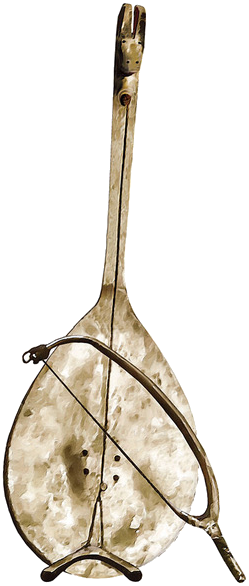This latest issue of Oral Tradition arrives somewhat later than the editors had hoped. It took us some time to regroup after producing our last volume, a monumental special issue on the oral traditions of religious communities in the Iranian-speaking world. We hope, however, that the wait will prove to have been worth it, since the present issue, though more modest in size than Volume 35.2, easily makes up for its relative compactness by its breadth and diversity of approach. The reader who makes their way from beginning to end will traverse some three millennia of oral and performance traditions, beginning from the Vedic period in ancient India and concluding in poetry slams recorded a few years ago in Manchester, New Hampshire.
Emily Blanchard West opens the volume by tracing a recurring type-scene in the Mahābhārata back to the Vedic myth of Prajāpati. Her analysis reveals the deep cosmological and religious significance driving the repetition of scenes in which a person disguised as or mistaken for an animal is killed. Each of these scenes reenacts the primordial killing of Prajāpati, to which the epic narrative returns at crucial moments of transition.
David L. Cooper, Demetry Ogoltsev, and Michal Ondrejcek take up a challenge that goes back to the early days of the elaboration of the “oral-formulaic theory,” namely, the possibility of devising a quantitative method for distinguishing orally composed texts from those composed with the aid of writing. After reviewing the troubled history of attempts to measure “formulaic density,” the authors propose a new method, taking as their test corpus a set of nineteenth-century forgeries of supposedly oral poems in Old Czech, which they compare with other genuinely oral poems that circulated contemporaneously with the forgeries. This may be the first article in Oral Tradition to include mathematical formulae!
With their analysis of oral narratives from the Kadavu Islands (southern Fiji), Loredana Lancini, Patrick Nunn, Meli Nanuku, Kaliopate Tavola, Taniela Bolea, Paul Geraghty, and Rita Compatangelo-Soussignan venture into the realm of geomythology. Although the narratives they discuss derive from relatively recent ethnographic fieldwork, the tales of conflict between the gods Tanovo and Tautaumolau likely reflect cultural memories of the eruption of Nabukelevu Volcano some 2,500 years ago. This ethnographically rich study represents a fascinating synthesis of folklore and geology.
Paying particular attention to patterns of tense-switching in several corpora of narratives in Occitan, with a corpus of French narratives included for comparison, Janice Carruthers and Marianne Vergez-Couret provide an empirical basis for distinguishing between several “degrees of orality” conditioned by factors such as mode of transmission, performance context, and whether the narrative has an oral or written source. Their scalar approach offers a welcome escape from the simplistic oral/written binary, while simultaneously illustrating the riches of materials in minoritized languages like Occitan.
Cara Losier Chanoine concludes the volume by exploring the peculiar bimodality of contemporary slam poetry, which often exists both as written text and as performance. Offering her own multimodal archive as a proof of concept, she demonstrates the value of transcription methods adapted from ethnopoetics, coupled with archival materials, as tools to unlock the poets’ expressive strategies as well as the forms of multiformity and mouvance particular to this contemporary oral genre.
As these brief descriptions suggest, the five articles assembled here differ widely in their topics and approaches. In this way, they illustrate the capaciousness of the study of oral tradition, which remains a vitally important mode of engagement with cultures both past and present. I conclude this brief editorial note with my usual invitation to readers to submit their own work on the riches of the world’s oral traditions.
David F. Elmer
Editor, Oral Tradition
